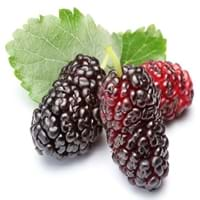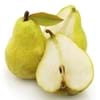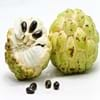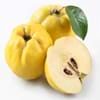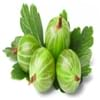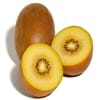Health Benefits
Arthritis prevention, Cancer prevention, Gout treatment, Heart care
Anti-aging benefits, Boosts immune system, Cancer prevention, Flu treatment, Hair care, Heart care, Improves eye vision, Increases metabolic rate, Kidney stone treatment, Maintains healthy cholesterol level, Skin cleansing, Skin rejuvenation, Treatment of common cold, Treatment of skin Diseases
General Benefits
Anti-inflammatory properties, Boosts immune system, Controls blood pressure, Controls blood sugar levels, Cures fever, Digestive aid, Sore throat treatment
Boosts immune system, Controls blood sugar levels, Flu treatment, Improves eye vision, Maintains healthy cholesterol level, Treatment of common cold
Skin Benefits
Reduces wrinkles, Treatment of acne
Anti-aging benefits, Skin cleansing, Treatment of skin diseases
Hair Benefits
Promotes longer and healthier hair, Shiny hair
Protects hair, Regulates hair growth
Allergy Symptoms
Anaphylaxis, Digestive Problems, Itching, Skin Rashes, Swelling
Breathing difficulty, Itching, Nasal congestion, Redness of eyes, Runny nose, Sneezing
Side Effects
Allergic reaction
Decrease in blood sugar levels, Allergic reaction
Best Time to Eat
As a snack in the late afternoon, Don't consume at night and before bed, Eat the fresh ones, avoid mixing with any other foods, don't eat after meal., Morning time (before lunch)
Best if taken as a breakfast (or empty stomach), As a snack in the late afternoon, Don't consume at night and before bed, Eat the fresh ones, avoid mixing with any other foods, don't eat after meal., Morning time (before lunch)
Vitamin B5 (Pantothenic Acid)
Not Available
Vitamin C (Ascorbic Acid)
Vitamin K (Phyllochinone)
Phytosterol
Not Available
Calories in Fresh Fruit with Peel
Calories in Fresh Fruit without Peel
Not Available
Not Available
Calories in Frozen Form
Not Available
Calories in Dried Form
Not Available
Calories in Canned Form
Not Available
Not Available
Season
Autumn, Summer, Winter
Spring, Summer
Varieties
Green Anjou, Red Anjou, Bartlett, Red Bartlett, Bosc, Comice, Concorde, Forelle, Seckel and Starkrimson
Charparral, Pendula, Teas, Bellaire and Lingan
Color
Yellow
Pink, Purple, White
Taste
Crunchy, Sweet
Tart
Origin
China, Japan
China
Soil Type
Clayey, Loamy, Sandy
Clay, Loam
Climatic Conditions
Cold, Hot, Without frosts
Sunny
Facts about
- The first pear tree was planted in North America in 1620.
- The Chinese considered the pear fruit to be a symbol of immortality.
- This fruit was used as a natural remedy against nausea in ancient Greece.
- It can take up to 10 years for a tree to produce mulberry fruit.
- Mulberry leaves are fed to silkworms to enhance silk production.
- In Germany, they say that devil uses root of mulberry tree to polish his boots.
Other Countries
Argentina, Belgium, India, Italy, Japan, South Africa, Spain, Turkey, United States of America
Colombia, Egypt, India, Indonesia, Kenya, Mexico, Pakistan, Peru, Russia, United States of America
Top Importer
Europe
Not Available
Botanical Name
Pyrus communis
Morus Alba
Synonym
Not Available
Morus atropurpurea or Morus multicaulis
Subkingdom
Tracheobionta
Tracheobionta
Division
Magnoliophyta
Magnoliophyta
Class
Magnoliopsida
Magnoliopsida
Subclass
Rosidae
Alismidae
Species
P. communis
M. alba
Generic Group
Rose
Mulberry
Difference Between Pear and Mulberry
We might think that Pear and Mulberry are similar with respect to nutritional value and health benefits. But the nutrient content of both fruits is different. Pear and Mulberry Facts such as their taste, shape, color, and size are also distinct. The difference between Pear and Mulberry is explained here.
The amount of calories in 100 gm of fresh Pear and Mulberry with peel is 57.00 kcal and 43.00 kcal and the amount of calories without peel is Not Available and Not Available respectively. Thus, Pear and Mulberry belong to Low Calorie Fruits and Low Calorie Fruits category.These fruits might or might not differ with respect to their scientific classification. The order of Pear and Mulberry is Rosales and Rosales respectively. Pear belongs to Rosaceae family and Mulberry belongs to Moraceae family. Pear belongs to Pyrus genus of P. communis species and Mulberry belongs to Morus genus of M. alba species. Beings plants, both fruits belong to Plantae Kingdom.

